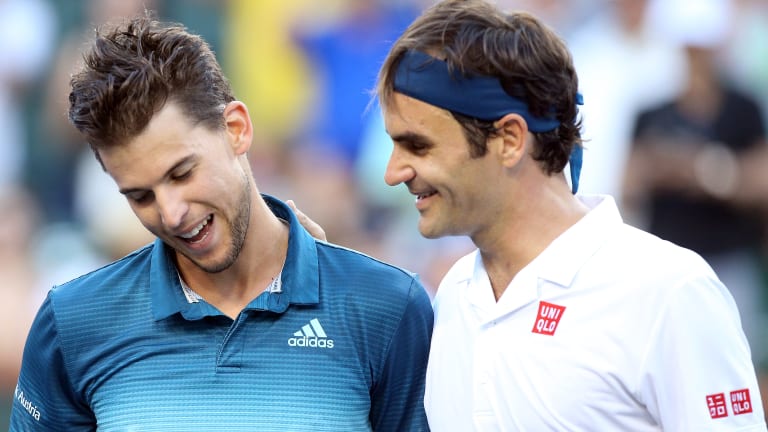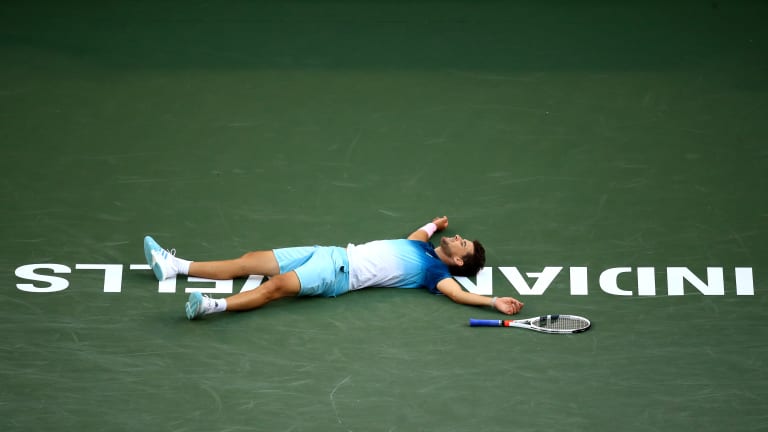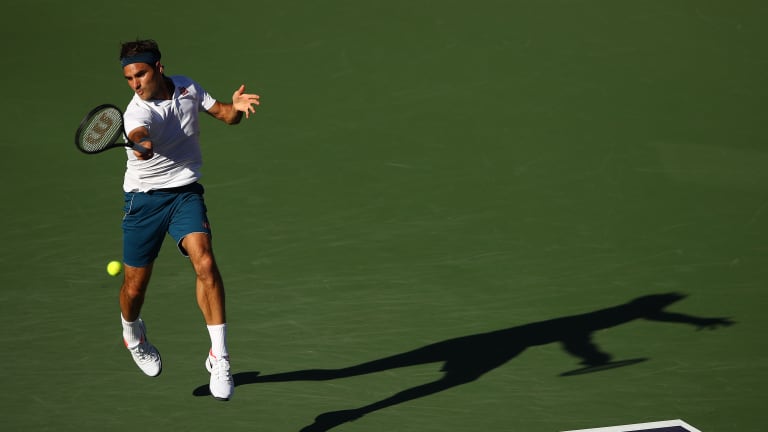This week, we're counting down the Top 5 Indian Wells finals (look for the Top 5 Miami finals soon!)
Indian Wells, USA
Top 5 Indian Wells Finals, No. 4: Dominic Thiem d. Roger Federer, 2019
By Mar 13, 2024Indian Wells, USA
Carlos Alcaraz and Iga Swiatek reset with Indian Wells wins, as rivals endure their own slip-ups
By Mar 18, 2024Indian Wells, USA
Carlos Alcaraz defeats Daniil Medvedev to defend his Indian Wells title, Iga Swiatek beats Maria Sakkari for women's title
By Mar 17, 2024Indian Wells, USA
Carlos Alcaraz wins second straight Indian Wells title with victory over Medvedev in final
By Mar 17, 2024Indian Wells, USA
From the yellow ball to the crystal ball: What's in store for the future of the BNP Paribas Open?
By Mar 17, 2024Indian Wells, USA
Iga Swiatek beats Maria Sakkari again in BNP Paribas Open final
By Mar 17, 2024Indian Wells, USA
Top 5 Indian Wells Finals, No. 1: Serena Williams d. Steffi Graf, 1999
By Mar 17, 2024Indian Wells, USA
2024 BNP Paribas Open men’s final preview: Carlos Alcaraz vs. Daniil Medvedev
By Mar 17, 2024Indian Wells, USA
Top 5 Indian Wells Finals, No. 2: Rafael Nadal d. Juan Martin del Potro, 2013
By Mar 17, 2024Indian Wells, USA
Who Will Win: Carlos Alcaraz or Daniil Medvedev, 2024 Indian Wells men's final
By Mar 17, 2024Indian Wells, USA
Top 5 Indian Wells Finals, No. 4: Dominic Thiem d. Roger Federer, 2019
This classic clash seems to come from a different era, and point to a different future than the one we have today.
Published Mar 13, 2024

© ©Icon Sportswire (A Division of XML Team Solutions) All Rights Reserved
Advertising

Thiem, finally able to relax, after his 3-6, 6-3, 7-5 victory over Federer.
© Getty Images
Advertising

Federer came up just short at Indian Wells, but two weeks later would go on to win Miami—in what would be his final Masters 1000 title.
© Getty Images